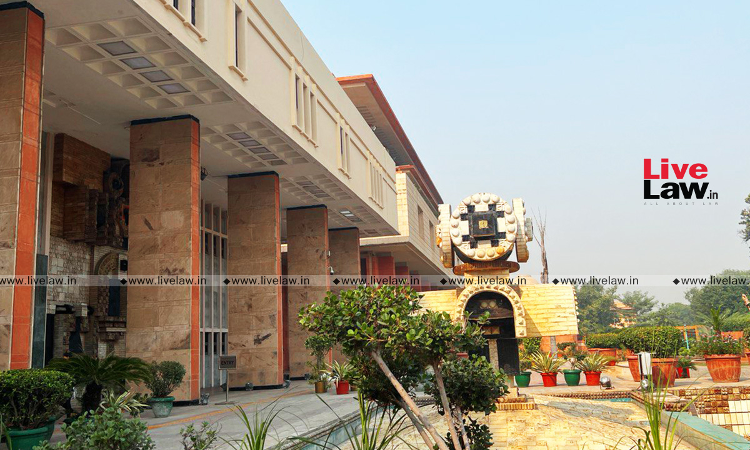- Home
- /
- High Courts
- /
- Delhi High Court
- /
- Delhi HC Acquits Two Men Sentenced...
Delhi HC Acquits Two Men Sentenced To Life For Allegedly Committing Murder 26 Yrs Ago; Emphasizes Insufficiency of "Last Seen Together" Evidence
Bhavya Singh
19 April 2024 5:30 AM
While overturning the conviction and life sentence of two individuals accused of a murder over 26 years ago, the Delhi High Court has acquitted them of all charges, while ruling that being "last seen together" with the victim is insufficient grounds for guilt.In their ruling on the appeals against the trial court's October 2001 decision, Justices Suresh Kumar Kait and Manoj Jain stated that...
While overturning the conviction and life sentence of two individuals accused of a murder over 26 years ago, the Delhi High Court has acquitted them of all charges, while ruling that being "last seen together" with the victim is insufficient grounds for guilt.
In their ruling on the appeals against the trial court's October 2001 decision, Justices Suresh Kumar Kait and Manoj Jain stated that the fact that the accused and victim worked together meant their being together wasn't necessarily unusual. They also expressed doubts about the reliability of the witnesses' testimonies.
Moreover, the bench emphasized that given the professional relationship between the accused and the victim, the "last seen theory" should be applied. This involves considering the entirety of the prosecution's case and examining the circumstances leading up to and following the last known sighting.
“We are of the view that it will not be safe to hold the accused guilty merely on the basis of the last seen together circumstance which is also not proved beyond shadow of doubt. Moreover, the accused and deceased were working together and in such a peculiar situation, their being together cannot be said to be unusual,” the division bench observed.
In July 1997, the victim's body was discovered on a railway track, leading to the subsequent arrest of the appellants - Videshi Kumar and Ram Nath - shortly thereafter.
According to the prosecution, the victim was murdered due to his knowledge of one of the appellants' alleged "illicit relationship" with a woman.
The trial court primarily based its guilty verdict on circumstantial evidence, noting that witnesses had last seen the victim in the presence of the two accused individuals. The high court suspended the life imprisonment sentences of the two appellants in 2003 and 2004, respectively.
The court, while declining to uphold the conviction, noted that the crucial "last seen witness" had become uncooperative, and the testimonies of others lacked reliability. Consequently, the court believed that both the accused deserved the benefit of doubt.
Expressing bewilderment, the court questioned how the police had contacted witnesses who hadn't initiated contact themselves, and also criticized the investigation conducted by the agency.
The court remarked on the lack of clarity regarding the timing of the accused's arrest and the withholding of information about other cases involving similar alleged murders with the same motive. It stressed that the motive couldn't be inferred from the accused's disclosure statements, which were inadmissible as evidence. Additionally, there was no other evidence connecting them to the crime.
Moreover, the court noted the absence of any incriminating evidence recovered from the accused.
Since the case relied on circumstantial evidence, particularly the assertion by the prosecution that the accused were last seen with the deceased before his body was found on the railway tracks the next morning, the court suggested, "the Investigating agency should have prepared a site plan clearly pointing the places where they were seen together and the place from where the dead body was eventually recovered. Needless to emphasize, in such type of matters, the proximity between these two places is also of vital importance."
The Court remarked that the prosecution failed to establish a connection between the accused and the knife found near the body. The Court emphasized the lack of a site plan depicting where the accused and the deceased were last seen together.
The Court said, "To add to the miseries, the police has not prepared any site plan depicting the place where the accused were last seen together with the deceased and the place of recovery of dead body. This important detail cannot be left for imagination. Be that as it may, the aspect of „last seen together‟ does not stand proved conclusively. Moreover, it is weak kind of evidence which can never be said to be sufficient in itself for holding someone guilty, particularly when motive is also not proved."
“Curiously enough, on one hand, the prosecution has alleged that the accused persons were very clever and guileful and in order to screen themselves from legal punishment, they had thrown the dead body on railway track to portray it to be a case of a train-accident and on the other hand, they were fool enough that after committing the alleged murder, they would leave the weapon of offence at the spot. This paradox is not digestible," the Court added.
Accordingly, it acquitted the accused.
Case Title: Videshi Kumar v State
Citation: 2024 LiveLaw (Del) 470

